Palais Gyeongbokgung (경복궁)
1.4Km 2025-09-19
161, Sajik-ro, Jongno-gu, Seoul
+82-2-3700-3900
Yi Seong-gye (1335-1408), le fondateur de la dynastie Joseon, déplaça la capitale à Hanyang (l’ancien nom de Séoul) et construisit Gyeongbokgung, le premier palace de la dynastie. Terminé en 1395, Gyeongbokgung fut le premier palais royal où le roi non seulement résidait mais aussi dirigeait le pays. Edifié sur les principes du feng shui de l’époque, le site choisi était entouré des montagnes Bugaksan, Namsan, Inwangsan et Naksan. Le palais est exposé au sud pour bénéficier de la plus longue exposition au soleil avec les montagnes derrière qui bloquent les vents froids du Nord.
En tant que palais royal, son architecture représente ce qui se faisait de mieux à l’époque. La porte Gwanghwamun, la porte Heungnyemun et le hall du trône Geunjeongjeon furent construit dans un style grandiose pour représenter la dignité et l’honneur de la nation.
La palais Gyeongbokgung possède de nombreux atouts culturels : ses murs en pierre, ses toits et ses statues Haetae reflètent le degré d’avancement architectural de la dynastie Joseon. Le pavillon Gyeonghoeru (où se tenaient des banquets pour les délégations étrangères et pour le roi et ses dignitaires) et le bassin Hyangwonjeong (un endroit pour la détente) sont considérés comme les plus beaux exemples du genre en Corée.
Ne manquez pas de visiter le Musée national folklorique situé à proximité après votre visite du palais (entrée gratuite).
Festival de la culture royale (궁중문화축전)
1.4Km 2025-09-03
161, Sajik-ro, Jongno-gu, Seoul
+82-2-3210-4684
Le festival de la culture royale a lieu dans les 5 palais du pays et dans le sanctuaire de Jongmyo. Organisé depuis 2014 entre la fin avril et le début du mois de mai, les visiteurs ont ici l'occasion d'apprécier des programmes originaux en rapport avec la culture traditionnelle et royale de Corée dans les différents palais de Séoul tout en profitant du temps clément du printemps. Le festival est désormais organisé deux fois par an, au printemps et en automne.
Galerie K.O.N.G (공근혜갤러리)
1.4Km 2024-10-25
38, Samcheong-ro 7gil, Jongno-gu, Seoul
Ouvert depuis 2005, la galerie joue un grand rôle sur le développement de l'art de la photographie en Corée. La galerie se situe désormais près de Cheongwadae, dans l'arrondissement Samcheong-dong. La galerie s'occupe désormais de mettre en avant notamment des artistes contemporains à travers le monde entier.
Musée National du Palais de Corée (국립고궁박물관)
1.4Km 2023-03-24
12, Hyoja-ro, Jongno-gu, Seoul
+82-2-3701-7500
Inauguré en 1992 sous le nom du Musée royal, l’actuel Musée national du palais de Corée expose des reliques du royaume de Joseon (1392-1910). Près de 20.000 reliques royales des palais Gyeongbokgung, Changdeokgung, et Changgyeonggung ainsi que celles du sanctuaire de Jongmyo y sont présentées.
1. Symboles et documents royaux (Royal Symbols and Records) - La dynastie Joseon soutenant les idéaux confucianistes, le roi était donc considéré comme le souverain absolu, et le couple royal faisait figure, avec la reine, de parents de tout le peuple. Pour rehausser son autorité, la dynastie a fait fabriquer divers symboles royaux.
2. Rites ancestraux (Ancestral Rites) - Un rite ancestral se tenait dans un sanctuaire abritant les tablettes des rois et des reines de la dynastie Joseon. Ce rite était non seulement une cérémonie de culte de la famille royale mais aussi une fête de musique et de danse célébrée pour souhaiter le salut et la prospérité éternelle du pays.
3. Architecture du palais (Palace Architecture) – Le palais était une demeure pour le roi et sa famille, et le centre de politique et d’administration, où le roi gouvernait le pays. Le centre du palais de la dynastie Joseon, suivant les plans d’architecture traditionnelle, comprenait Jeongjeon, le hall principal comme centre des événements de l’Etat et de discussions politiques, et Pyeonjeon, l’office du gouvernement.
4. Sciences de Joseon (Joseon Sciences) – Durant sa première période, la dynastie Joseon oeuvrait à établir la légitimité de sa fondation et à enrichir le pays. Afin de réaliser ces idéaux, la dynastie promouvait comme jamais auparavant des domaines tels que les sciences ou la médecine et développait diverses armes pour la défense nationale.
5. Vie de la famille royale (Royal Life) - Le roi et la reine étaient les figures symboliques de la dynastie Joseon, mais ils étaient également comme le peuple ordinaire dans leur vie privée au palais. Le palais était divisé en différentes sections : office du roi, demeure pour la reine, bureau du prince héritier. Chaque espace contenait des meubles appropriés, qui étaient fabriqués avec des matériaux de haute qualité selon de stricts critères pour la famille royale.
Mémorial national du gouvernement provisoire de la République de Corée (국립대한민국임시정부기념관)
1.4Km 2023-01-16
279-24, Tongil-ro, Seodaemun-gu, Séoul
Le Mémorial national du gouvernement provisoire de la République de Corée a été créé dans le but de mettre en lumière le désir d'indépendance du gouvernement provisoire de la République de Corée et de transmettre ces valeurs aux générations futures. Le lieu est constitué d'un terrain de 3 656 ㎡, d'un bâtiment de 9 703 ㎡ et de salles d'exposition de 2 240 ㎡. L'immeuble composé de quatre étages en surface et de trois étages en sous-sol comprend trois salles d'exposition permanentes, une salle d'exposition spéciale, des archives, une « place des symboles », une salle polyvalente et un jardin sur le toit.
L'exposition permanente se concentre sur le Mouvement du 1er mars qui a permis d'établir le gouvernement provisoire de la République de Corée mais aussi sur la formation du gouvernement coréen qui a succédé juridiquement au gouvernement provisoire. Dans la salle d'exposition qui se trouve au 1er étage, une exposition intitulée le « Retour du gouvernement provisoire de la République de Corée » accueille les visiteurs. Par ailleurs, une œuvre d'art mural symbolique dont le titre est la « Vague de l'histoire », est installée sur l'esplanade extérieure. Cette œuvre représente la volonté du gouvernement provisoire d'obtenir l'indépendance ainsi que le dynamisme de la Corée d'autrefois, actuelle et du futur.
Musée d’art Sungkok (성곡미술관)
1.5Km 2021-02-16
42, Gyeonghuigung-gil, Jongno-gu, Seoul-si
+82-2-737-7650
Le musée Sungkok est une galerie d’art construite par la corporation coréenne Ssangyong, dans le but de promouvoir l’art coréen. Pour les écrivains talentueux, une exposition individuelle peut avoir lieu.
Pour le développement de l’art en Corée, il y a le calendrier des expositions. Enfin, il y a aussi une exposition internationale, dans le but de maintenir un lien avec le courant des arts provenant de l’étranger. Or ces dernières représentent plus de 15 expositions par an.
On peut approximativement diviser la galerie en 2 parties: la partie principale où se tiennent les expositions et l’annexe où se trouvent diverses facilités.
Dans le parc des sculptures, une centaine d’arbres d’espèces varies, de plusieurs décennies forment une forêt. Cet assemblage, arbres et sculptures, trouve aussi son sens artistique. Dans ce bois, il y a un chemin que vous pourrez suivre afin de découvrir cet espace de 7,450 m2. Sculptures de grands artistes coréens et étrangers ne font qu’harmonie avec la nature.
Dans le cas où vous souhaiteriez acheter un objet artisanal à un prix raisonnable, il y a une boutique d’objets d’art au sein du bâtiment principal. Certains produits viennent du musée et d’autres viennent d’artistes reputes; lieu où vous pourrez trouver nombre de petites choses qui font plaisir.
Après le musée, vous pouvez vous reposer dans la maison de thé. Cette dernière peut vous offrir une délicieuse tasse de thé que vous apprécierez encore plus devant la beauté de chaque saison qui teinte le parc des sculptures. Au printemps, la fraîcheur des senteurs de la nature, l’été, la forêt vivifiée, l’automne, le changement des couleurs et l’hiver, la blancheur de la neige. Des tables en terrace vous attendent.
Peut-être désirerez-vous vous arrêter, souffler et respirer l’air frais, contemplant votre voyage et votre vie. La maison de thé vous propose une variété de thés, cafés et cookies. Les spécialtés de la maison sont le thé au citron et les cookies aux noix, nous vous les recommandons.
Dongnimmun (Arc d'indépendance) (독립문)
1.5Km 2022-12-15
251, Tongil-ro, Seodaemun-gu, Seoul
Dongnimmun se trouve sur un site autrefois connu sous le nom de Yeongeun, où étaient reçus les envoyés. Lors de la visite d'un envoyé chinois, le roi passait par cette porte pour le saluer. Dongnimmun fut bâtie en 1897, afin de proclamer l'indépendance de la Corée vis-à-vis du Japon, de la Russie et de la Chine, qui ont influencé et menacé la Corée depuis longtemps.
La construction a été financée par les dons des citoyens coréens. Les traces du passé sont toujours visibles à Dongnimmun. Les deux piliers devant Dongnimmun sont des vestiges de Yeongeungmun.
La forme de Dongnimmun évoque celle de l'Arc de Triomphe en France. Dongnimmun a été construite au moyen d'un mur de granit, avec un passage de 14,28 m de haut. L'inscription "Dongnimmun" en coréen se trouve en haut du fronton, entourée des deux côtés par le drapeau coréen. Un escalier situé sur la partie intérieure gauche permet d'accéder à la partie supérieure. Des fleurs nationales Mugunghwa sont plantées tout autour de la porte. A présent, des routes passent tout autour, et la porte attire le regard de tous les passants.
Hall de l’histoire de la prison de Seodaemun (서대문형무소역사관)
1.5Km 2022-12-15
251, Tongil-ro, Seodaemun-gu, Seoul
+82-2-360-8590
※ Fermeture temporaire en raison du Covid-19 (à partir du 7 février)
Le hall de l’histoire de la prison de Seodaemun est un musée particulier situé au parc de l’Indépendance de Seodemun. Il a été construit à la fin du royaume de Joseon (~1910), et fut le principal instrument d’oppression utilisé par les Japonais où de nombreux patriotes coréens du mouvement indépendent furent torturés et éxécutés.
Il est muni d’une prison au sous-sol, où Yu Gwan-Sun périt après le mouvement du 1er mars, de tour-vigies, d’une salle de torture, d’une salle d’éxécution, de 7 cellules de prison, d’un hall d’exposition historique etc.
Le 1er étage est « un lieu d’honneur », où vous pouvez découvrir la prison de Seodaemun grâce à un système de graphiques. Un grand écran montre l’histoire de sa construction et les périodes transitoires de son évolution. Il y a des expositions spéciales et la salle commune qui exposent des faits sur l’Histoire de Corée.
Le deuxième étage traite de « l'Histoire » et vous pouvez voir différentes salles d’exposition concernant « la résistance nationale », « l’histoire de la prison » et « la vie en prison ». Vous pourrez remarquer que les Coréens n’ont jamais perdu leur esprit national ou leur opiniâtreté à retrouver leur liberté, malgré ce chapitre particulièremenet noir de leur Histoire. La « salle expérimentale » est la plus effroyable et terrifiante de la prison. Dans les salles de « détention provisoire » ou de « torture » vous verrez avec frayeur des scènes réalistes de torture reconstituées.
Dans le Parc de l’Indépendance de Seodaemun se trouvent, le vestige historique N˚ 32 (Dongnimmun), N˚ 33 (Yeongeunmunjucho), le hall de l’Indépendance, le monument des martyrs, et le monument de la déclaration de l’Indépendance du 1er mars.
Porte Gwanghwamun (광화문)
1.6Km 2022-12-14
161, Sajik-ro, Jongno-gu, Seoul-si
+82-2-3700-3900
Gwanghwamun est la porte principale du Palais Gyeongbukgung, fondé en 1395, par le premier empereur de la dynastie Joseon, Taejo.
C’est la porte du sud parmi les quatre portes de la capitale sud-coréenne. Son nom signifie “Que la Lumière de l’Illumination recouvre le Monde!” et elle porte le but profond que les gens qui ont fondé la dynastie Joseon avait, en créant une nouvelle dynastie.
La Porte Gwanghwamun a été construite de granite. Au centre, il y a une entrée ressemblant à un arc-en-ciel, appelée Hongyemun, et au-dessus, se trouve la tour de la porte. La Porte Gwanghwamun renferme un souvenir douloureux dans l’histoire de la Corée. Durant l’ occupation japonaise de la Corée, de façon à tuer les esprits des citoyens coréens, le général du gouvernement japonais avait détruit la porte et construit son propre bâtiment gouvernemental. L’apparence réelle de la porte est celle de 1968 lorsqu’elle a été reconstruite en utilisant du béton, et elle est située environ à 10m derrière le point d’origine. Pour restituer la forme d'origine de la porte, le gouvernement a entrepris des travaux d'aménagement à partir de 2006, ces travaux se sont terminés le 15 août en 2010.
Musée National d'Art Contemporain (국립현대미술관 서울관)
1.6Km 2023-06-23
30, Samcheong-ro, Jongno-gu, Seoul
+82-2-3701-9500
Le Musée National d'Art Contemporain de Séoul a ouvert ses portes en 2013 au centre de Séoul à côté du palais Gyeongbok. Le musée a adapté un concept de 'cour' pour mieux se mélanger aux alentours et lier organiquement l'extérieur et l'intérieur du bâtiment.
Sur le terrain du musée, il y avait autrefois quelques grandes organisations administratives de l'époque Joseon mais aussi les hôpitaux militaires lors de la colonisation japonaise. Ce site est un site historique tant sur le plan politique que culturel. Notez que le musée est fermé les mercredis et samedis.
*Jour de l'inauguration : 12 novembre 2013
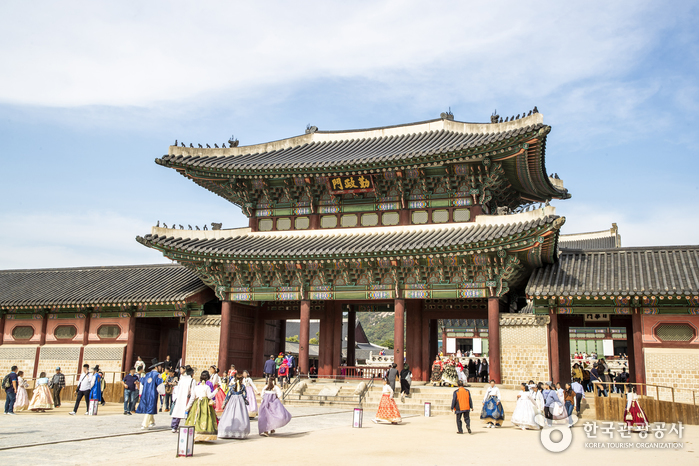
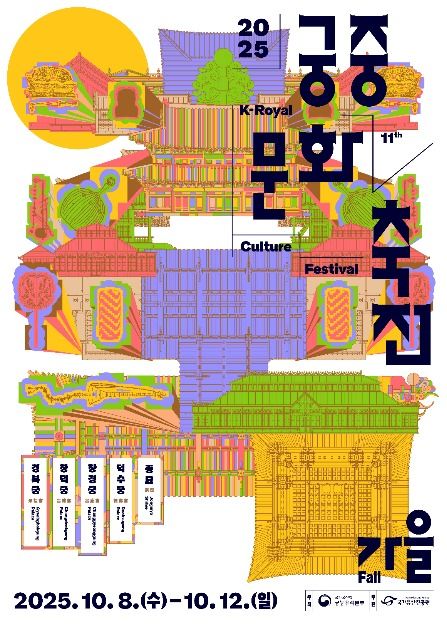
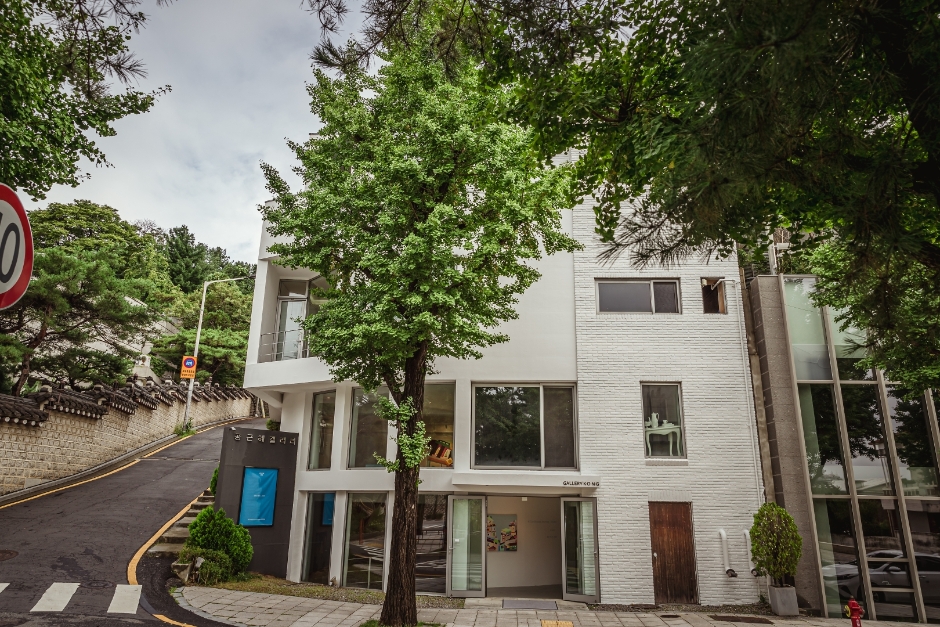
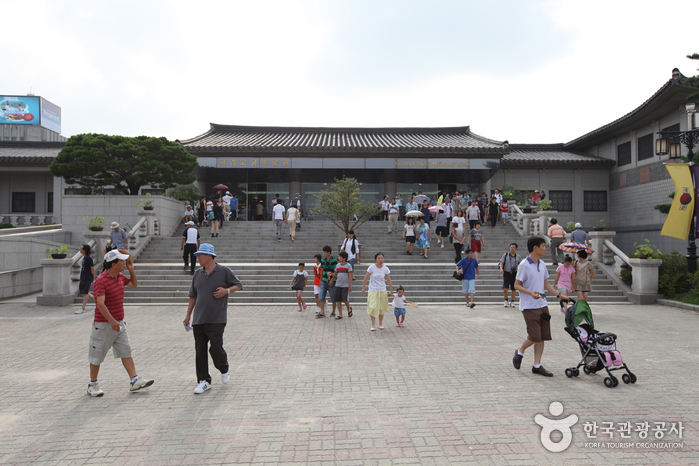

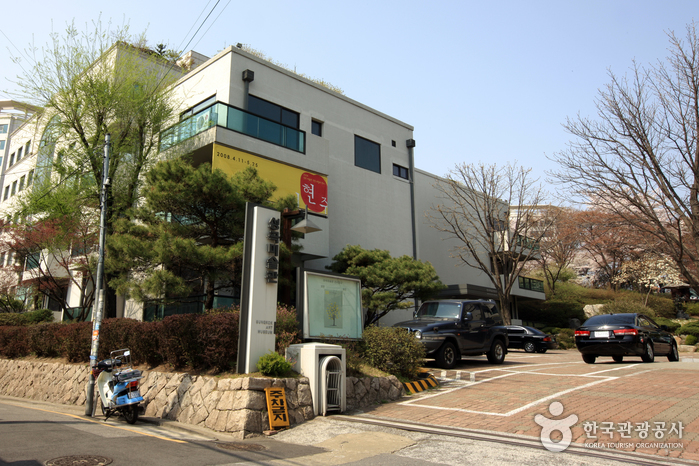
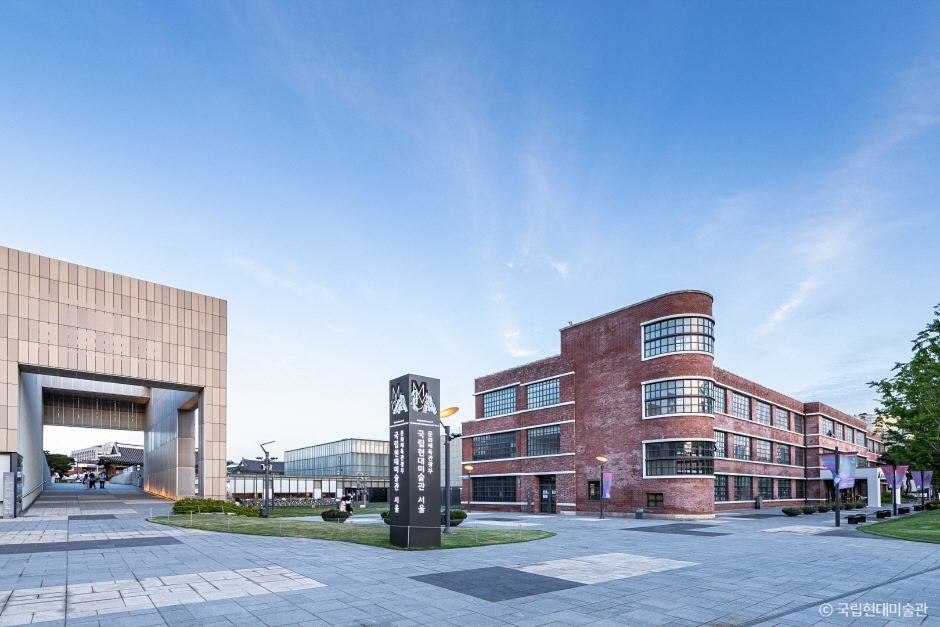
 Français
Français
 한국어
한국어 English
English 日本語
日本語 中文(简体)
中文(简体) Deutsch
Deutsch Español
Español Русский
Русский